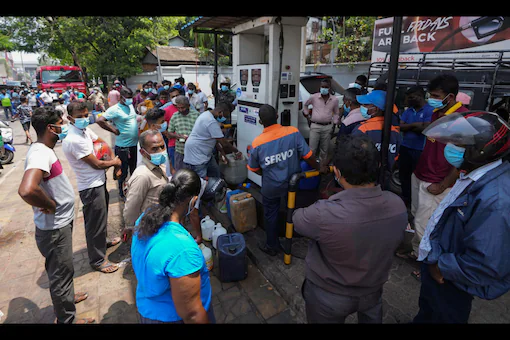Officials in Sri Lanka say at least two people have died while waiting in long lines for petrol, as severe shortages and skyrocketing prices inflict agony and hardship across the island nation.
The men, who were in their sixties, died while waiting for petrol and kerosene oil in two different sections of the country, according to police spokesman Nalin Thalduwa in Colombo’s commercial city.
Sri Lankans have been queuing at gas stations for weeks, sometimes for hours, as the country grapples with the greatest economic crisis in its independent history, with a dearth of foreign money limiting the supply of crucial items.
“One was a 70-year-old three-wheeler driver who was a diabetic and heart patient while the second was a 72-year-old, both had been waiting in line for about four hours for fuel oil,” Thalduwa said.
Because power utilities are unable to pay for enough foreign oil to meet demand, motorists are forced to queue for hours outside filling stations for gasoline, and the government has enforced rolling blackouts.
According to local media accounts, many ladies fainted while standing in the blazing heat to buy cooking gas at several sites across the island over the weekend.
Sri Lanka’s only fuel refinery was shut down on Sunday as crude oil inventories ran out, according to Ashoka Ranwala, head of the Petroleum General Employees’ Union.
The energy ministry could not be reached for comment right away.
After low-income families began to shift away from cooking gas owing to price rises, the use of kerosene oil has surged. Laugfs Gas, the country’s second-largest supplier, hiked costs for a 12.5kg cylinder by 1,359 Sri Lankan rupees ($4.94) on Sunday, according to a statement.
Sri Lanka’s foreign currency reserves fell to $2.31 billion in February as it struggled to acquire dollars to pay for increasingly expensive gasoline exports.
According to the latest government figures, Sri Lanka’s inflation rate reached 15.1 percent in February, making it one of the highest in Asia, with food inflation reaching 25.7 percent.
Sri Lanka’s central bank floated the rupee earlier this month, leading the currency to drop by more than 30% to around 275 rupees per US dollar.
Last week, authorities stated that the government would seek IMF assistance to handle its mounting foreign debt crisis and bolster its reserves.
The COVID-19 pandemic slowed Sri Lanka’s tourism industry, which is a major source of foreign cash, and remittances from overseas workers have also decreased.
Shortages have disrupted almost every area of daily life, with authorities postponing term assessments for roughly three million pupils this week due to a shortage of paper and ink.
On Saturday, the price of a 400g pack of milk powder climbed by 250 rupees ($0.90), prompting restaurant owners to hike the price of a cup of milk tea to 100 rupees.
Authorities in the Western Province suspended exams for millions of students last week due to a lack of printing paper. The electrical utility on the island has also stated that it is out of paper to print monthly bills for millions of customers.
